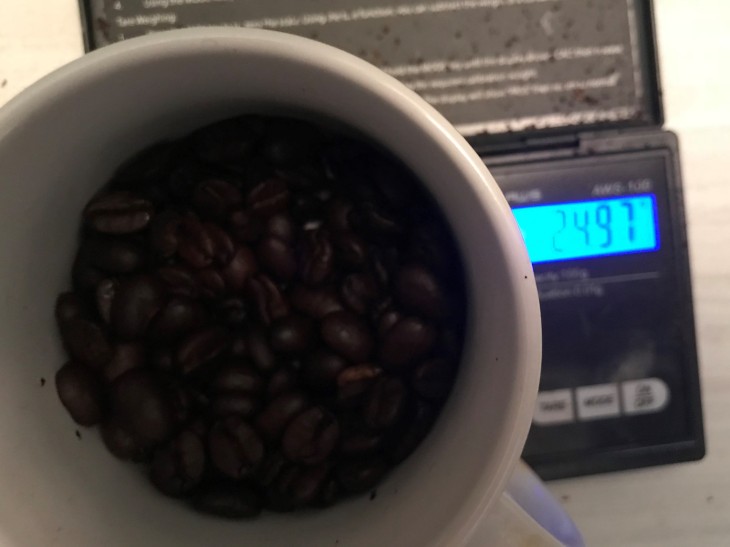Pour over is one of our favorite ways to make coffee. The flavor profile is similar to drip brewers, but markedly more delicate and clean. (This is of course because it is essentially a humanized version of the drip brewers present in so many homes.) Pour overs are charming in their simplicity and, yet if one so chooses, they also allow for a more scientific approach to brewing. It’s easy to tweak the formula in any way to achieve your perfect brew.
Materials Necessary
- Kettle
- Scale
- Dripper
- Grinder
- Filters
- 23-25 g. Whole bean coffee
- 20 oz. water
- Mug

First, boil approximately 20 ounces of water. Once the water has boiled, allow it to cool for a few minutes while you prepare the coffee. The ideal temperature range is 195-205° F.
While the water cools, weigh your beans. You want 23 g if you’re brewing a light or medium roast and 25 g if you’re brewing a dark roast. Don’t worry if you’re a little over or under — that will just make your final cup a shade milder or stronger.

You want to grind your beans to a medium fine texture. Aim for roughly the same coarseness as sea salt and then adjust from there. If your brew is too bitter, try a coarser grind. If your coffee is too mild, try a finer grind.

Before putting in your ground coffee, be sure to pre-wet your filter with the heated water (unless you’re using a metal filter). Wetting your filter will remove any paper residue from the surface, eliminating any additional woodsy flavors. This will also allow you to give your mug a final rinse and preheat your mug a bit.

Once you’ve wetted your filter and added your ground coffee to the filter, you’re ready to begin the brewing process. Act quickly — coffee loses 40% of the aromatics which give it its flavor within 15 minutes of grinding.
Take your heated water and gently pour it over the ground beans. This first pour is the blooming stage and you should notice your coffee swell up and turn golden brown. This is the carbon dioxide being released from the beans as the water hits them. If your coffee is too old, your bloom might not be too impressive, but any coffee within 90 days of the roast date should offer a beautiful bloom.

Allow the water to drain down so that the grounds are still very moist. Pour more water over the grounds, focusing on the darkest areas. Allow the water to settle. Repeat until your mug is full.
Ways you can customize a pour over (or metrics to keep track of if you want to be as scientific as possible):
- Weight of coffee used. We write down the full reading in our coffee journal every time. For this, we recommend a scale that is sensitive to at least a tenth of a gram, although you can find excellent (and cheap) ones that are sensitive to a hundredth of a gram.
- Temperature of water used. Your sweet spot will vary based on the coffee you’re using. Or you can just go the fast route and go with whatever temperature the water’s at when you’re ready to use it. As mentioned previously, pour over is an extremely flexible technique.
- Grind. Keeping track of your grind will allow you to figure out your ideal setting.
- Extraction time. Some people are very detail-oriented and measure the time between extractions, as well as the mass of the water poured. This requires a timer and a scale you can brew on. We would recommend that beginners skip this step, as it really isn’t necessary for delicious coffee.
Now that you know how to brew a perfect pour over, try one for yourself and leave a note in the comments. Cheers!


Thank you for your in-depth insight into such a delicate but flavorful experience. I am not new to the coffee world but a novice at Best. I’m trying to roast on my own and coming up with different flavors in hopes to creat a fun hobby for all to enjoy. I am looking forward to the other blogs you have done and all the experience you put into each and every word used to express the knowledge and love you have for your product.
LikeLike